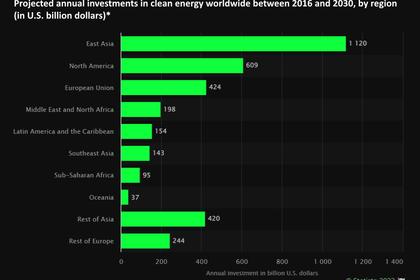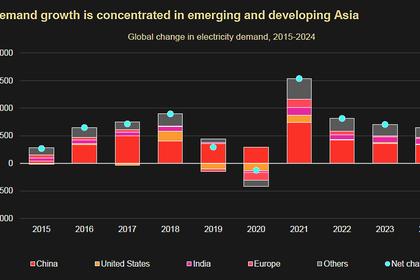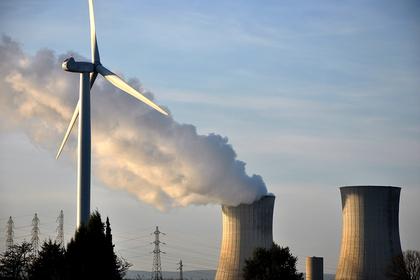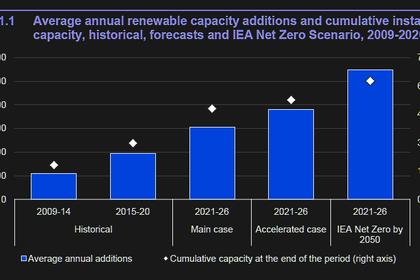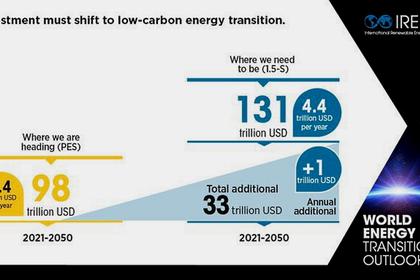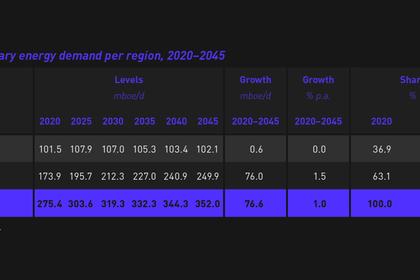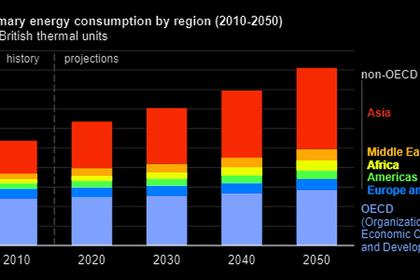
THE UTILITIES ASSET MANAGEMENT TRENDS 2022

By XAVIER LOIN Senior Asset Management Consultant APLINES
ENERGYCENTRAL - Jan 27, 2022 - The electric power and utility industry is currently undergoing a massive transformation in the way it operates, manages its assets, and is regulated. In the past, electric utilities were generally considered a steady sector that is expected just to produce and deliver electricity to customers. Now the expectations are changing as utilities are being pushed to bring sustainability in the way they do everything. Most of this push is attributed to growing environmental concerns, rising power demands, and increasing regulatory as well as political pressure to bring innovation into the industry. The purpose of this article is to provide an overview of major trends of development happening within the global power and utility industry.
Increasing Penetration of Distributed Energy Resources:
Increasing penetration of Distributed Energy Resources (DER) represents the key aspect of change that modern-day utilities are experiencing. DERs are essentially any electricity-producing or storing resource that is installed near the load center. These can be solar photovoltaic (PV) generators, wind turbines, or even a simple battery energy storage (BES) to offset electricity tariff through peak load shaving. To accommodate DERs, utilities are transitioning away from a traditional power network arrangement where electricity is to be generated from a single large bulk power source and then transmitted over long-ranged transmission lines. Since DER are essentially a physical asset, the implication is utilities have now more assets to look after – both at the strategic as well as tactical level. As per this study, utilities now have up to 10 times more assets to manage compared to what they were managing 20 years ago. Moreover, the DER penetration trend will continue to grow as much as 387 GW by 2025 in the US alone by bringing $110.3 Billion of cumulative investment.
Though it is a positive sign, the downside is that the utilities would need to deploy more advanced infrastructure to ensure monitoring and control and DERs – meaning more cost on already tightly regulated utilities. The positive side to this is favorable regulatory policies that are rebating bulk electricity users such as commercial plazas and industrial parks to pursue DERs as the preferred options of electricity. Altogether, the penetration of DERs is favoring both customers and utilities. Customers are benefited by reducing excessive tariff rates charged at peak load times. The utilities, on the other hand, are benefitted by deferring network re-enforcement projects which otherwise would require significant investment from the capital budget approved for existing rate-payers money.
Growth in Electric Vehicles Adoption:
The adoption of Electric vehicles (EV) has seen significant growth both at the individual customer as well as private and public fleet level. The said growth is the direct result of aggressive government goals that are compelling major automotive players to end the production of conventional gasoline vehicles. EVs with batteries (also called Plug-in Hybrid Electric Vehicles) are essentially controllable electrical energy storage devices that can absorb as well as deliver electricity back to the grid. To accommodate this unique load on a massive scale, utilities are required to plan and forecast the impact of EV onto their distribution network. Some aspects of planning would include ensuring sufficient capacity is available at the feeder as well as the stations level to accommodate high capacity Level 2 and DC fast chargers. The exponential growth of EV adoption is a relatively newer development that started only a couple of years ago. With aggressive environmental goals to reduce carbon emissions, automotive manufacturers plan to completely electrify their production lines. Since utilities typically plan their budget 5 to 7 years in advance, the utilities did not originally think of such growth in the EV sector and their potential impact on the utility industry. Currently, utilities are actively working in collaboration to understand the full impact of such a significant increase of load on rate-payers money and what can be done to incorporate the impact of such load in their strategic asset management decision making.
Impact of COVID-19:
COVID-19 has presented a unique and unprecedented challenge to utility operations and decision-making. One of the most dominant impacts is the change in energy consumption patterns. For example, due to work from home requirements, lots of commercial offices, restaurants, and industries shut down and replaced with home offices and workspaces. From an electricity tariff standpoint, this means the utility is not able to recover the previous higher electricity rates from commercial and industrial customers as they are effectively transferred into residential rate classes. Similarly, the residential loads are proportionally increased due to increasing commercial activities from home thus causing an increasing burden on pole and pad-mounted distribution transformers and laterals. This also caused disruptions in the traditional definition of off-peak, mid-peak, and on-peak zones of electricity rates thus inhibiting utilities to recover the expected amount from rate-payers. In some geographical areas, the utilities were able to compensate their customers by offering flat electricity tariffs as opposed to time-specific peak rates.
Another dominant way the COVID impacted the industry is through the reduced shift and working hours of line workers causing disruptions in timely restorations of a power outage. This also caused utilities to maintain service quality and reliability performance requirements that were set during the pre-COVID era. Moreover, some of the critical capital projects planned by the utility to perform renewal of their asset base also got delayed due to lesser availability of manpower and global supply chain issues. Currently, there have been significant discussions going on in the industry to fully understand the extent of the impact of COVID-19 on the utility performance and their customers.
Cybersecurity :
Modern-day utilities operate in an environment where strong interdependencies exist between physical and cyberinfrastructure. This makes them vulnerable to cyberattacks potentially bringing a range of threats such as billing fraud, loss of power or blackout, and loss of confidential and other strategic-level information owned by the utility. As utilities achieve digital transformation, the risk of cyber threats increases proportionally. In recent years, utilities all over the world including the US, Australia, Europe, and Japan have seen a significant surge in cyber attacks. Due to the asset-intensive nature of the industry, a typical successful cyberattack may bring a loss of service to hundreds of thousands of customers for several hours stretch the loss of revenue to go in billion dollars along with the grief of intervention from regulators and legislative authorities on top of it. In the year 2020 alone, the electric utilities in the US spent close to US$ 120 billion in infrastructure investment on-grid enhancement and cybersecurity resilience. This development indicates that the importance of resilience against potential cybersecurity threats has now become prime importance for any electric utility around the globe.
Conclusion
In a nutshell, in the last few years since the start of 2020, electric utilities all over the world have undergone unprecedented growth in a range of areas. While the areas of growth are numerous, most of the growth was seen in energy sustainability, digital transformation, renewable energy, and electrification of transportation. Even though the growth existed well before 2020, the impact of COVID acted as a catalyst and accelerated adoption of such technologies at every level of customer base such as residential, commercial, and industrial. The utilities currently studying the impact of such as the change that happened in the last few years and are strategically ready to rethink fundamentally the way they are operated and managed.
-----
Earlier:
